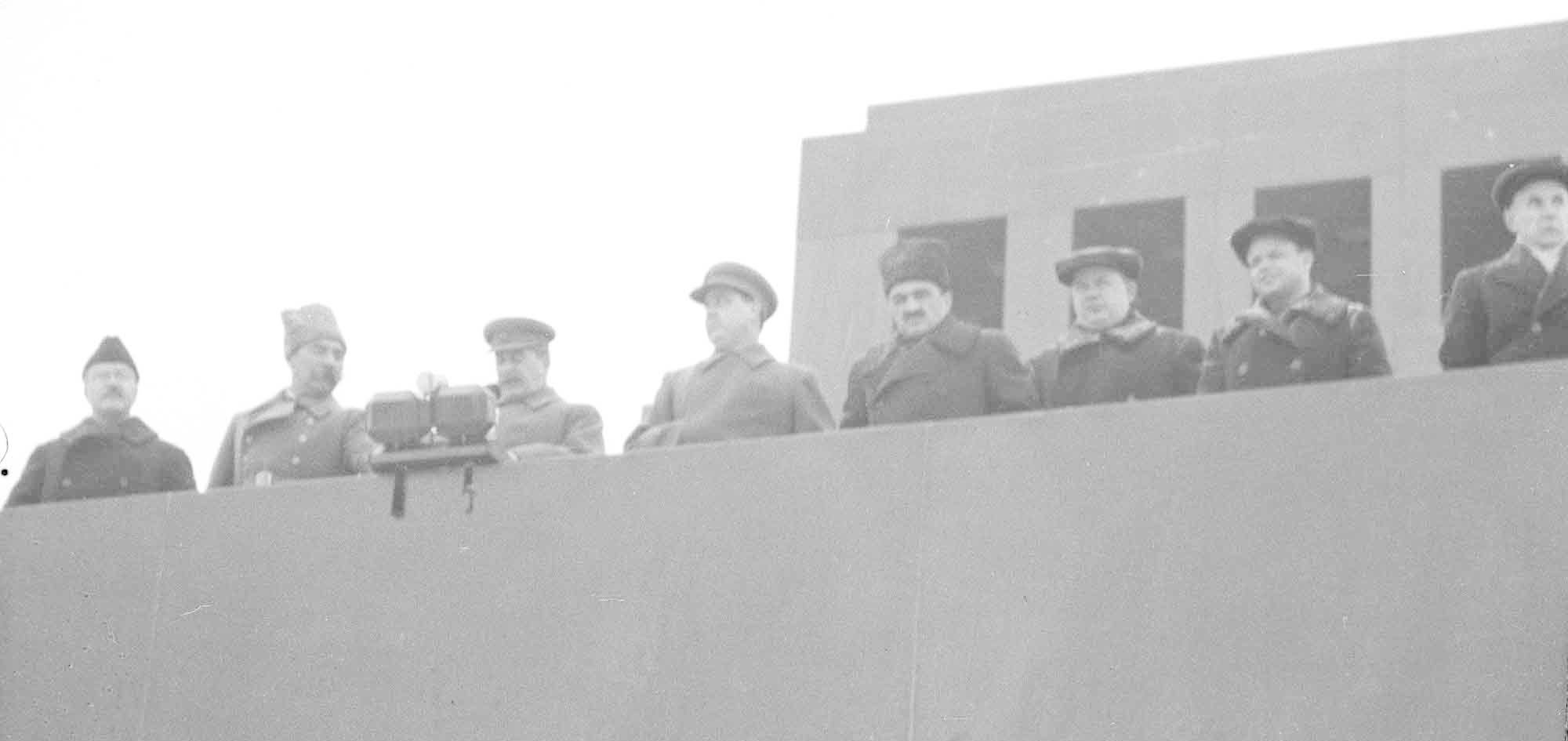80 years ago, at the height of fighting for Moscow, the legendary military parade of 1941 was held on the Red Square. On 7 November, some 3,000 soldiers, Suvorov Military College students and cadet detachments marched on the Red Square.
The military parade on the Red Square on 7 November was a tradition and the chief event of the Revolution anniversary’s celebration. But in 1941, when the Nazi troops were rapidly advancing through the territory of the Soviet Union, the country was not up to it.
Late October and early November of 1941 were, perhaps, the hardest days for Moscow. An evacuation of industrial enterprises was underway, with bridges and factories mined, and the enemy located in 70–100 km from the Moscow centre.
On 28 October, the decision to hold the parade was made at a meeting with the members of the Politbureau and military commanders. At first, when it was proposed to hold a military parade, everyone fell silent, but after a pause there was a unanimous ‘Yes, sure, it will raise the spirits of the troops and the rear!’. Preparations for the solemn march began.
On 2 November, the author of the famous march ‘Farewell of Slavianka’, bandmaster of Dzerzhinsky division Vasily Agapkin, was announced to be appointed chief conductor of the parade and given the task to collect a combined orchestra. By the time, most of the musicians from the full-time combined orchestra went to the military units of the garrison, the others joined the front. An orchestra from Gorky (now Nizhny Novgorod) came to the rescue.
The main condition of preparation for the parade was strict confidence: the brass band rehearsals on the Red Square were prohibited to be heard — no marches, no drumming or fanfare allowed. The country’s leadership feared that those sounds could alert Muscovites and cause panic. So rehearsals were held in Khamovniki, in the arena to hold horse race. Deputy People’s Commissar of Defence of the USSR Marshal Semyon Budyonny came there, too. He tamed his horse to the sounds of marches and even gave instructions about the orchestra’s repertoire. He was supposed to review troops.
Lieutenant General Pavel Artemyev, a commander of the Moscow military district and the Moscow defense zone was entrusted to command the parade.
Formal meeting of the Moscow City Council, dedicated to the 24th anniversary of October Revolution, was scheduled for 6 November. It took place not in the Bolshoi Theatre, which by that time had already been mined, but at Mayakovskaya metro station. Its lobby held 2,000 people.
Increased security was arranged, with a loudspeaker radio system installed.
On 6 November, a special 10-carriage train was formed at Belorusskaya metro station, which arrived with the USSR’s leaders at Mayakovskaya five minutes before the meeting. The opposite side of the platform had already had a 10-carriage train, which housed the orchestra, cloak and refreshment rooms, and a recording studio.
‘Our cause is just, so we will win!’, the slogan was announced all over the country from Mayakovskaya metro station.

Only after the formal meeting, around 11:00 pm, the parade commander Pavel Artemyev told the unit commanders about their participation in the military parade on the Red Square. There were only 10 hours left.
The parade was supposed to last 1 hour 1 minute and 20 seconds, according to preliminary calculation.
By 08:00 am (for security reasons, it was decided to shift the start an hour back), the entire territory from the Moskvoretsky Bridge to the Historical Museum was occupied with troops. 28,467 people (infantry, cavalry, riflemen, machine gunners, tankers and militia) took part in the event. It featured 296 machine guns, 18 mortars, 12 anti-aircraft machine guns, 12 small-caliber and 128 medium and high power guns, and 160 tanks (70 BT-7, 48 T-60, 40 T-34, two KV).
300 aircraft were supposed to participate, but due to a heavy snowfall and blizzard, the air part had to be cancelled.
People were ready for any turn of events. In case of the Red Square bombing, 35 medical points were on duty, including ambulances, five emergency relief crews, 15 firefighters and other special machinery to eliminate the consequences of fires, buildings, gas and electric networks destruction.
The parade was opened by cadets of the 1st Moscow Krasin Red Banner Artillery School to Chernetsky’s march ‘Parade’. The cavalry paraded to the sounds of ‘Cavalry Trot’.
The whole world heard the radio broadcast from the Red Square, with famous Soviet radio commentator and journalist Vadim Sinyavsky reporting.
The fearlessness and courage of the Russian people were highly appreciated in the world. The UK newspaper The News Chronicle wrote: ‘The arrangement of a traditional parade in Moscow at a time when there were hot battles on the outskirts of the city is a great example of courage and bravery.’
And the Daily Mail praised the military parade on 7 November 1941 as ‘one of the most brilliant displays of courage and confidence that has ever taken place during the war’.
The official portal of the Moscow Mayor and Moscow Government




